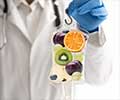Unveiling the hype behind IV therapy and the truth behind its potential risks.
- IV therapy, also known as intravenous therapy, has gained popularity in recent years as a wellness trend
- While IV therapy may have legitimate medical applications in certain cases, such as rehydrating the body after strenuous activity or excessive alcohol consumption, the majority of individuals seeking IV nutrition for subjective issues like fatigue or general malaise may not actually require it
- Potential risks are associated with IV therapy, including allergic reactions to the substances being injected and possible interactions with medications already being taken
You don't need a medical prescription, and you don't need a blood test beforehand—often, all you need is a consultation with a naturopathic doctor and a feeling that it would assist with whatever ails you (1✔ ✔Trusted Source
Controversies in fluid therapy: Type, dose and toxicity
Go to source).
The IV Lounge at the Toronto Functional Medicine Centre in the city's Yorkville neighborhood opened almost ten years ago, but more and more retail venues like this are cropping up.
The emphasis at Formula Fig, a spa-style establishment with vibrant millennial-green furnishings and facilities in Toronto and Vancouver, is on 30-minute facials and beauty treatments, but you can also have an IV drip ($165) while resting beneath an LED therapy light.
“Drips are no longer a trend—they may be here for good,” says naturopathic doctor Amauri Caversan, who founded the IV Lounge. “At first, they were mainly used by athletes, stars, and wealthy patients. But today I would say IV therapy has become a lot more mainstream.”
“These therapies are aimed at amorphous ailments people have: fatigue, general malaise, lack of energy,” says Timothy Caulfield, author of The Cure for Everything: Untangling the Twisted Messages about Health, Fitness, and Happiness. It’s very subjective, he points out. “There’s this idea that getting an IV drip is going to help your immune system, and there’s no evidence to support that.” Caulfield, a health and science policy professor at the University of Alberta.
IV Therapy: Promises, Pseudoscience, and Potential Risks
“The claims around IV nutrition are certainly pseudoscientific,” agrees Michelle Cohen, a family doctor in Brighton, Ont. and an assistant professor in the Department of Family Medicine at Queen’s University. She writes and tweets about wellness trends and has a particular interest in debunking alternative health claims. “There’s this idea that you can get better nutrition through an IV than simply through your gut, which is the way we were designed, or evolved, to absorb nutrition,” Cohen says. “Your average person does not need to have an IV to get adequate nutrition.”Can you go Overboard with These Vitamins?
Cohen explains, "Not exactly. At some point, the excess water-soluble vitamins in these IV drips become saturated and cannot be effectively absorbed by your blood. Since the kidneys continuously filter your blood and eliminate substances that are not needed, a large portion of the mega-dose of vitamins administered through IV therapy will be excreted from your body."Reference:
- Controversies in fluid therapy: Type, dose and toxicity - (https://pubmed.ncbi.nlm.nih.gov/24834399/)
Source-Medindia








